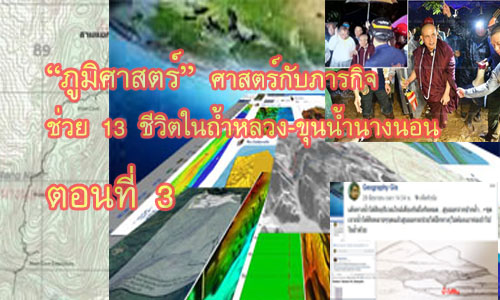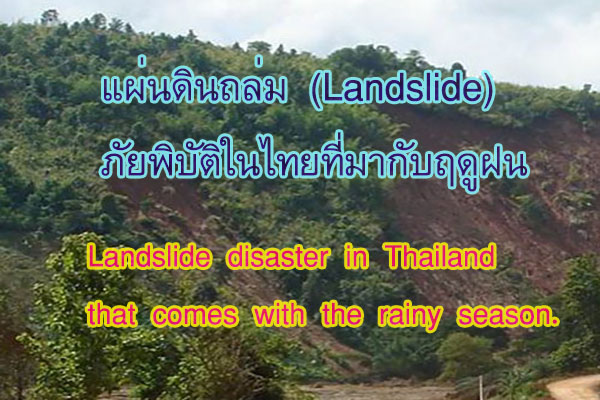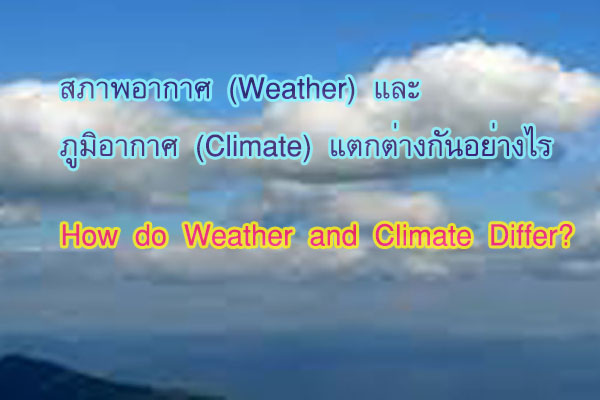
การรู้เรื่องลมฟ้าอากาศ เป็นการเรียนรู้สภาพของอากาศในช่วงระยะเวลาหนึ่งซึ่งเปลี่ยนแปลงไปตาม วัน เวลาและสถานที่ ส่วนการรู้เรื่องภูมิอากาศ ก็เป็นการเรียนรู้สภาพอากาศที่เกิดขึ้นเป็นประจำต่อเนื่อง
Meteorology involves studying the ever-changing atmospheric conditions. In contrast, climatology focuses on studying long-term weather patterns.
สภาพอากาศโดยทั่วไปจะหมายถึง อุณหภูมิ ความชื้น เมฆ หมอก ลม ฝน และทัศนวิสัย การรู้เรื่องลมฟ้าอากาศ (Weather) เป็นการเรียนรู้สภาพของอากาศในช่วงระยะเวลาหนึ่งซึ่งเปลี่ยนแปลงไปตาม วัน เวลาและสถานที่ เช่น ลมฟ้าอากาศที่กรุงเทพมหานครในวันนี้ อุณหภูมิสูงถึง 40 องศาเซลเซียส ส่วนการรู้เรื่องภูมิอากาศ (Climate) ก็เป็นการเรียนรู้สภาพอากาศที่เกิดขึ้นเป็นประจำต่อเนื่องเป็นเวลานานๆ ภูมิอากาศจึงเป็นสภาพอากาศที่มีค่าปานกลางของแต่ละพื้นที่ เช่น ภูมิอากาศของกรุงเทพมหานครมีอุณหภูมิเฉลี่ย 27 องศาเซลเซียส
General weather conditions refer to temperature, humidity, clouds, fog, wind, rain, and visibility. Understanding weather involves learning about the atmospheric conditions over a specific period, changing with days, times, and locations. For instance, the current weather in Bangkok today includes a high temperature of 40 degrees Celsius. On the other hand, understanding climate is about learning the recurring weather patterns over an extended period. Climate represents the average weather conditions for a particular region. For example, the climate in Bangkok has an average temperature of 27 degrees Celsius.
อากาศมีความแตกต่างกันเนื่องจากองค์ประกอบ 3 อย่างคือ อุณหภูมิ ความชื้น และความกดอากาศ โดยองค์ประกอบดังกล่าวเกิดจากการได้รับรังสีจากดวงอาทิตย์ และองค์ประกอบทั้งหมดจะแตกต่างกันเนื่องจาก 6 ปัจจัยหลัก คือ
The atmosphere varies due to temperature, humidity, and air pressure. These components result from receiving radiation from the sun, and they all differ due to six key factors, namely:
1. ระดับละติจูด : มีผลต่อการได้รับปริมาณรังสีจากดวงอาทิตย์เนื่องจากแกนของโลกเอียงจากแนวดิ่ง 23 องศา การโคจรรอบดวงอาทิตย์จึงเอียงไปด้วย ขั้วโลกเหนือและขั้วโลกใต้หันเข้าหาดวงอาทิตย์สลับกัน ในแต่ละพื้นที่จึงได้รับปริมาณรังสีจากดวงอาทิตย์ไม่เท่ากัน
Latitude: Affects the amount of solar radiation received from the sun due to the Earth's axis being tilted at 23 degrees from the vertical. As the Earth revolves around the sun, the inclination varies, with the northern and southern hemispheres alternating. Consequently, each region receives different amounts of solar radiation.

2. ความแตกต่างระหว่างพื้นดินและพื้นน้ำ : พื้นดินและพื้นน้ำมีคุณสมบัติที่ต่างกัน มีผลต่อการคายและการดูดความร้อน โดย
The difference between land and water: Land and water possess distinct characteristics that affect heat release and absorption.
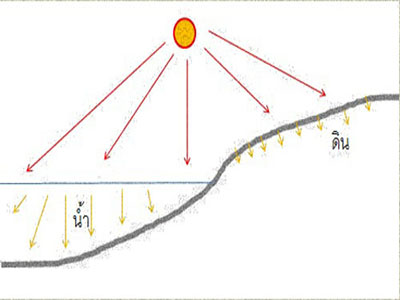
2.1 พื้นน้ำจะโปร่งแสง แสงจะส่องผ่านได้ลึก เมื่อได้รับความร้อนจากแสงอาทิตย์ความร้อนจะกระจายออกไปกว้างและลึก ความร้อนส่วนหนึ่งจะถูกใช้สำหรับการระเหยของน้ำจึงทำให้พื้นน้ำร้อนช้ากว่าพื้นดิน ในส่วนที่ความร้อนกระจายไปลึกการคายความร้อนจึงเป็นไปได้ช้า
Water surfaces are transparent, allowing light to penetrate deeply. When exposed to sunlight, the heat spreads widely and deeply. Part of the heat is utilized for the evaporation of water, causing the water surface to heat up more slowly than land. In regions where heat disperses deeply, heat dissipation is consequently slower.
2.2 พื้นดินจะทึบแสง แสงจะส่องผ่านได้ยาก เมื่อได้รับความร้อนจากแสงอาทิตย์ความร้อนจะกระจายได้น้อย ความร้อนจะอยู่แค่ผิวดิน พื้นดินจึงร้อนเร็วกว่าพื้นน้ำ และคายความร้อนได้เร็วกว่าพื้นน้ำ
The land absorbs light, making it difficult for light to penetrate. When exposed to sunlight, heat disperses minimally, and the heat remains mainly at the surface of the soil. As a result, the land heats up faster than water and releases heat more rapidly than water surfaces.
3. ระดับความสูงเหนือระดับน้ำทะเลของพื้นที่ : ชั้นบรรยากาศที่ถัดจากผิวโลกขึ้นไปคือ ชั้นโทรโพสเฟียร์(Troposphere) เป็นชั้นที่อุณหภูมิจะลดลงตามระดับความสูงด้วยอัตรา 6.4 องศาเซลเซียส ต่อ 1 กิโลเมตร ซึ่งเป็นอัตราการเปลี่ยนแปลงอุณหภูมิปกติ นั่นคือ อุณหภูมิตามระดับความสูงของพื้นที่เหนือระดับน้ำทะเลจะลดลงไปด้วย
Elevation above sea level in the region: The atmospheric layer immediately above the Earth's surface is the Troposphere. This layer experiences a temperature decrease with altitude at a rate of 6.4 degrees Celsius per 1 kilometer, which is the normal lapse rate. The temperature at higher elevations above sea level decreases.

4. กระแสน้ำในมหาสมุทร เป็นกระแสน้ำที่เรียบชายฝั่งไม่ว่าจะเป็นจากขั้วโลกมาศูนย์สูตร หรือ จากเขตร้อนไปละติจูดสูงก็จะมีผลต่ออุณหภูมิของอากาศบริเวณที่กระแสน้ำไหลผ่านด้วย
Ocean currents are continuous flows of water along the coastlines, whether they originate from the poles towards the equator or from the tropics towards higher latitudes. These currents have an impact on the air temperature in the regions through which they flow.
5. ลักษณะภูมิประเทศ มีผลต่ออากาศ เช่น แนวเทือกเขาที่กั่นการเคลื่อนที่ของอากาศจะมีผลต่ออุณหภูมิและความชื้นของอากาศที่อยู่คนละด้านของเทือกเขา
The topographical characteristics affect the climate, such as mountain ranges acting as barriers to the movement of air, influencing the temperature and humidity on either side of the mountains.
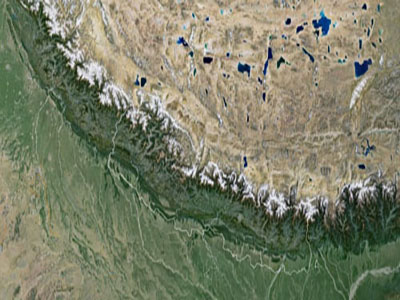
6. มนุษย์ เป็นผู้สร้างกิจกรรมต่างๆ ที่มีผลกระทบต่ออากาศ ทั้งการใช้สารเคมีที่ทำลายชั้นบรรยากาศ การสร้างโรงงานอุตสาหกรรม การเผาป่า เป็นต้น
Human activities influence the atmosphere, such as the use of ozone-depleting chemicals, the creation of industrial plants, and deforestation.









